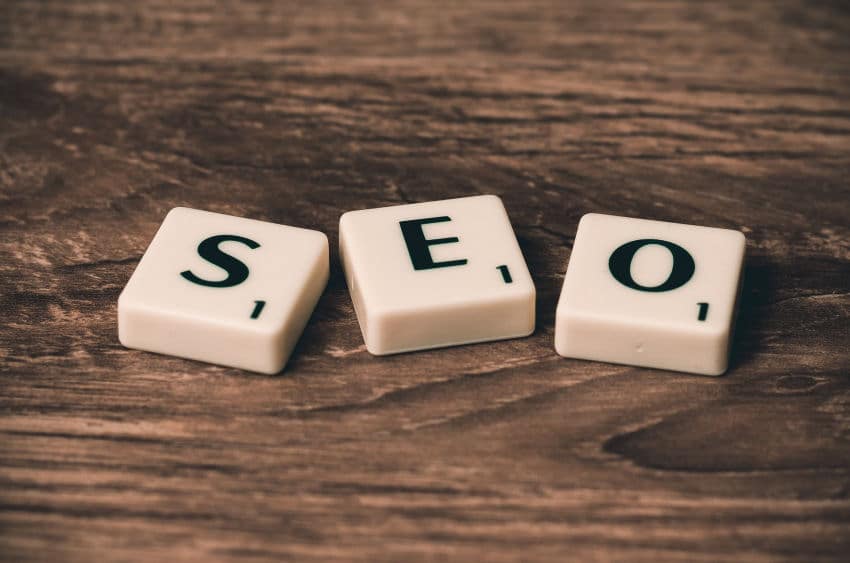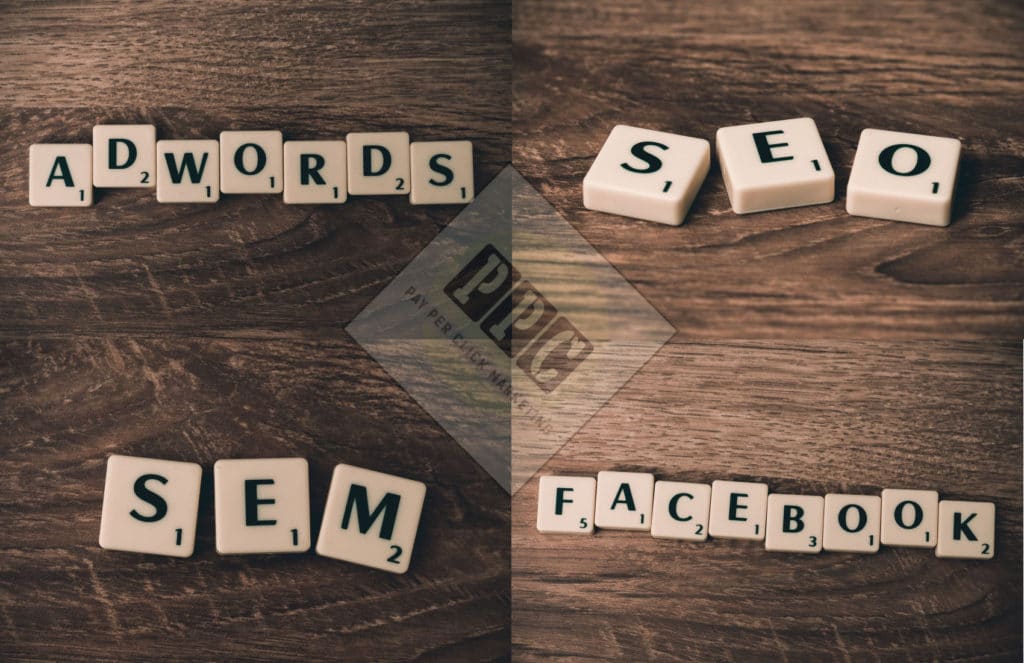If you’re a business owner or marketer, you know that paid online advertising can be a highly effective way to drive traffic and sales to your website. However, with so many different types of paid online advertising available, it can be tough to figure out which one is right for you. In this article, we’ll explore the five most common types of paid online advertising and help you decide which one is best suited for your business needs.
What Is Paid Online Advertising?
Paid online advertising is a marketing strategy that involves paying to display ads on search engines, social media platforms, and other websites. These ads can take many forms, including banner ads, search ads, display ads, and video ads. Paid online advertising is a powerful tool for businesses because it allows them to reach their target audience more quickly and effectively than other forms of advertising.
Types of Paid Online Advertising
1. Pay-Per-Click (PPC) Advertising
PPC advertising is one of the most popular forms of paid online advertising. It involves placing ads on search engines like Google or Bing and paying for each click that your ad receives. PPC ads are highly targeted and can be tailored to specific demographics, locations, and keywords, making them an excellent way to reach your ideal customer.
Here are just a few examples of PPC Advertising:
-
Google Ads: This is the most popular PPC advertising platform and allows businesses to place ads on Google’s search engine results pages (SERPs) and on websites that are part of the Google Display Network.
-
Bing Ads: Similar to Google Ads, Bing Ads allows businesses to place ads on Bing’s search engine results pages and on websites that are part of the Bing Ads network.
-
Facebook Ads: Facebook Ads enables businesses to create ads that appear on Facebook and Instagram. These ads can be targeted based on demographics, interests, and behavior.
-
Twitter Ads: Twitter Ads allows businesses to promote their tweets, accounts, and trends to targeted audiences on Twitter.
-
LinkedIn Ads: LinkedIn Ads is a B2B-focused PPC advertising platform that allows businesses to reach a professional audience. It offers targeting options such as job title, industry, and company size.
-
Amazon Advertising: Amazon Advertising enables businesses to promote their products on Amazon.com and on other websites that are part of the Amazon Advertising network.
-
YouTube Ads: YouTube Ads enables businesses to run video ads that appear before, during, or after YouTube videos.
These are just a few examples of popular sources for PPC advertising. Each platform offers unique features and targeting options that can be used to reach specific audiences and achieve specific advertising goals.
2. Social Media Advertising
 Social media advertising involves placing ads on social media platforms like Facebook, Twitter, or LinkedIn. These ads can be targeted to specific demographics and interests, making them an excellent way to reach your ideal customer. Social media advertising is highly effective because it allows you to reach a broad audience quickly and easily.
Social media advertising involves placing ads on social media platforms like Facebook, Twitter, or LinkedIn. These ads can be targeted to specific demographics and interests, making them an excellent way to reach your ideal customer. Social media advertising is highly effective because it allows you to reach a broad audience quickly and easily.
Here are just a few examples of social media advertising:
-
Facebook Ads: With over 2 billion active users, Facebook is one of the most popular social media platforms and offers a robust advertising platform that allows businesses to target specific demographics, interests, behaviors, and more.
-
Instagram Ads: Owned by Facebook, Instagram is a highly visual platform that is ideal for businesses that sell products or services that are visually appealing. Instagram offers a variety of advertising options, including sponsored posts, stories, and videos.
- TikTok Ads: TikTok is a popular social media platform that is rapidly growing in popularity among users of all ages. Businesses can leverage TikTok’s advertising options to reach a highly engaged audience. TikTok offers a variety of ad formats, including in-feed videos, sponsored hashtags, branded effects, and top view ads. With TikTok Ads, businesses can target their ideal audience based on factors such as age, gender, location, and interests, making it an effective way to promote their brand and reach new customers.
-
Twitter Ads: Twitter is a fast-paced social media platform that is ideal for businesses that want to reach a highly engaged audience. Twitter offers a variety of advertising options, including promoted tweets, promoted accounts, and promoted trends.
-
LinkedIn Ads: LinkedIn is a social media platform that is designed for professionals, making it an excellent platform for B2B advertising. LinkedIn offers a variety of advertising options, including sponsored content, sponsored InMail, and display ads.
-
Pinterest Ads: Pinterest is a highly visual platform that is ideal for businesses that sell products or services that are visually appealing. Pinterest offers a variety of advertising options, including promoted pins, promoted videos, and promoted carousels.
These are just a few examples of social media advertising options available today. Other platforms such as Snapchat, TikTok, and YouTube also offer advertising options that businesses can take advantage of to reach their target audience.
3. Display Advertising
 Display advertising involves placing ads on third-party websites, typically in the form of banner ads or pop-ups. These ads can be highly targeted and are an excellent way to reach a broad audience. Display advertising can be particularly effective for brand awareness campaigns and retargeting.
Display advertising involves placing ads on third-party websites, typically in the form of banner ads or pop-ups. These ads can be highly targeted and are an excellent way to reach a broad audience. Display advertising can be particularly effective for brand awareness campaigns and retargeting.
Here are just a few examples of Display Advertising:
- Banner ads – Google AdSense, Yahoo! Advertising, BuySellAds
- Pop-up ads – AdRoll, Propeller Ads, PopAds
- Video ads – YouTube, Vimeo, Vungle
- Native ads – Outbrain, Taboola, Sharethrough
- Rich media ads – DoubleClick, Flashtalking, Sizmek
These are just a few examples of display advertising and popular sources. There are many other display advertising formats and platforms available, each with its own strengths and weaknesses. It’s important to choose the right format and platform for your specific advertising goals and target audience.
4. Native Advertising
Native advertising involves creating ads that blend seamlessly into the content of a website or social media platform. These ads are typically designed to look like editorial content, making them more engaging and less intrusive than traditional ads. Native advertising can be highly effective for driving engagement and building brand awareness.
Here are just a few examples of Native Advertising:
- Sponsored content on news websites such as Forbes, The New York Times, and BuzzFeed.
- Sponsored posts on social media platforms such as Instagram, Facebook, and Twitter.
- Sponsored video content on YouTube.
- Sponsored content on podcasting platforms such as Spotify and Apple Podcasts.
- Branded articles on websites such as HuffPost and Mashable.
- Sponsored content on search engines such as Google and Bing.
- Sponsored content in mobile apps such as Instagram, Snapchat, and TikTok.
Native advertising can be a highly effective way for brands to promote their products or services while also providing value to the audience through informative or entertaining content that seamlessly blends in with the platform.
5. Video Advertising
Video advertising involves placing ads in online videos, typically before, during, or after the video plays. Video ads can be highly engaging and are an excellent way to reach a broad audience quickly. Video advertising is particularly effective for brand awareness campaigns and retargeting.
Here are just a few examples of Video Advertising:
-
YouTube Ads: YouTube is the world’s largest video-sharing platform, and it offers a variety of advertising options, including display ads, overlay ads, skippable and non-skippable video ads, and bumper ads.
-
Facebook Video Ads: Facebook is one of the largest social media platforms, and it offers businesses the ability to run video ads in various formats, including in-stream ads, carousel ads, and story ads.
-
Instagram Video Ads: Instagram, owned by Facebook, is a popular visual platform that allows businesses to run video ads in various formats, including story ads, in-stream ads, and carousel ads.
-
TikTok Ads: TikTok is a rapidly growing social media platform that specializes in short-form video content. Businesses can advertise on the platform in various formats, including in-feed ads, branded hashtag challenges, and brand takeovers.
-
LinkedIn Video Ads: LinkedIn is a social media platform for professionals, and it offers businesses the ability to run video ads in various formats, including sponsored content and message ads.
-
Snapchat Ads: Snapchat is a popular platform for sharing photos and videos, and it offers businesses the ability to run video ads in various formats, including snap ads, story ads, and collection ads.
-
Twitter Video Ads: Twitter offers businesses the ability to run video ads in various formats, including promoted tweets, in-stream ads, and promoted trends.
These are just a few examples of video advertising, and there are many more platforms and formats available to businesses today.
Which Type of Paid Online Advertising Is Right for You?
Deciding which type of advertising is right for your digital marketing can be a challenging task, as there are several options available, each with its own advantages and disadvantages. Here are some steps you can take to determine which advertising method is best suited for your business:
-
Define your advertising goals: The first step is to determine what you want to achieve through advertising. Whether it’s increasing brand awareness, generating leads, or driving sales, defining your goals will help you choose the right advertising method.
-
Identify your target audience: Knowing who your ideal customer is will help you determine which platform they are most likely to use and where you should focus your advertising efforts.
-
Evaluate your budget: Different advertising methods come with different costs, so it’s important to evaluate your budget and determine how much you can afford to spend on advertising.
-
Research advertising options: Once you’ve determined your goals, target audience, and budget, research the different advertising options available to you. Consider the advantages and disadvantages of each method and how well they align with your goals.
-
Test and measure: Once you’ve selected an advertising method, it’s important to test and measure your results to ensure that you’re getting the best return on investment (ROI). Use metrics like click-through rates, conversion rates, and cost per acquisition to evaluate the effectiveness of your advertising.
By following these steps, you can make an informed decision on which advertising method is right for your business and digital marketing strategy. Remember to regularly review your advertising efforts and adjust your strategy as needed to achieve your goals.
What is this Advertising Going To Cost Me?
The cost breakdown for different types of digital advertising can vary greatly depending on a number of factors, including the industry, target audience, and geographic location. However, here is a general breakdown of the costs associated with some common forms of digital advertising:
-
Pay-Per-Click (PPC) Advertising: PPC advertising is usually based on an auction system, where advertisers bid on keywords and placement. The cost per click can range from a few cents to several dollars, depending on the competition for the keyword. The average cost per click in the United States is around $2.69 for Google Ads.
-
Social Media Advertising: Social media advertising costs vary depending on the platform and the targeting options selected. On average, the cost per click (CPC) for social media advertising is lower than PPC advertising, with CPCs ranging from $0.50 to $2.00 for Facebook and $1.00 to $3.00 for Instagram.
-
Display Advertising: Display advertising costs can vary widely depending on the platform, targeting options, and the format of the ad. Some platforms charge based on cost per thousand impressions (CPM), while others charge based on cost per click (CPC). The average CPM for display ads is around $2.80, while the average CPC is around $0.75.
-
Native Advertising: Native advertising costs can also vary depending on the platform and targeting options selected. On average, the cost per click for native advertising is around $0.90 to $2.00.
-
Video Advertising: Video advertising costs can vary depending on the platform, targeting options, and the length of the ad. The cost per view for video advertising is usually around $0.10 to $0.30, but can be higher for highly targeted campaigns.
It’s important to note that these are just rough estimates and that the actual cost of advertising will depend on many factors. It’s recommended to do research and test different types of advertising to determine which works best for your specific business goals and budget.
 What Are Some SEO and SEM Strategies When Used With Advertising?
What Are Some SEO and SEM Strategies When Used With Advertising?
When it comes to using advertising for SEO and SEM strategies, there are a few key tactics to keep in mind. Here are some tips to consider:
-
Keyword Research: Conduct keyword research to identify the keywords that your target audience is searching for. Use this information to optimize your website content and your ad copy.
-
Ad Copy: Write compelling ad copy that incorporates your target keywords. This will help to improve your ad’s visibility and relevance to the user’s search query.
-
 Landing Pages: Ensure that your landing pages are optimized for the keywords you are targeting and that they provide a clear and concise message to the user. This will help to improve the user experience and increase the likelihood of conversions.
Landing Pages: Ensure that your landing pages are optimized for the keywords you are targeting and that they provide a clear and concise message to the user. This will help to improve the user experience and increase the likelihood of conversions. -
A/B Testing: Use A/B testing to test different ad copies, landing pages, and targeting options. This will help you to determine which strategies are most effective for your business.
-
Ad Extensions: Use ad extensions such as call extensions, location extensions, and sitelink extensions to provide additional information to users and improve your ad’s visibility.
-
Quality Score: Focus on improving your ad’s Quality Score by ensuring that your ads and landing pages are relevant, and that your click-through rates are high.
-
 Remarketing: Use remarketing campaigns to target users who have previously visited your website but did not convert. This will help you to stay top-of-mind and improve your chances of converting these users in the future.
Remarketing: Use remarketing campaigns to target users who have previously visited your website but did not convert. This will help you to stay top-of-mind and improve your chances of converting these users in the future.
By incorporating these strategies into your SEO and SEM campaigns, you can improve your advertising performance and drive more targeted traffic to your website.
What is Remarketing Advertising?
Remarketing advertising, also known as retargeting, is a digital marketing strategy that involves displaying targeted ads to people who have previously interacted with your website or products. This technique is an excellent way to re-engage with potential customers who have shown interest in your brand but haven’t made a purchase.
Remarketing advertising can be an effective way to increase your conversion rates and ROI. According to studies, retargeted ads have a click-through rate that is ten times higher than standard display ads, and they can lead to a 70% increase in conversion rates.
 Here are the steps you can take to implement a successful remarketing advertising campaign:
Here are the steps you can take to implement a successful remarketing advertising campaign:
-
Set up your tracking pixel: The first step in implementing a remarketing campaign is to set up a tracking pixel on your website. This pixel will allow you to track visitors to your site and display targeted ads to them later.
-
Segment your audience: Once your tracking pixel is set up, you can begin to segment your audience based on their behavior on your website. You can create different audience lists based on pages they have visited, products they have viewed, or actions they have taken on your site.
-
Create your ad campaign: After segmenting your audience, it’s time to create your ad campaign. Your ads should be targeted and relevant to the specific audience you are trying to reach. Use language and images that will resonate with your audience, and make sure your ads are visually appealing and stand out from the competition.
-
Monitor and adjust your campaign: As with any digital marketing campaign, it’s essential to monitor your results and adjust your strategy as necessary. Monitor your click-through rates, conversion rates, and other metrics to see what’s working and what’s not. Adjust your ad targeting, messaging, and visuals to optimize your campaign for maximum results.
For affiliate marketers, remarketing advertising can be an excellent strategy for increasing conversions and revenue. By retargeting visitors to your affiliate partner’s website, you can remind them of the product or service they were interested in and encourage them to make a purchase. You can also use remarketing to promote related products or services to your audience, increasing the chances of a successful conversion.



